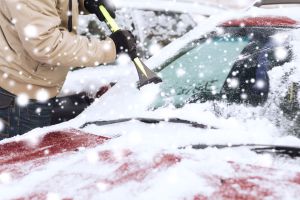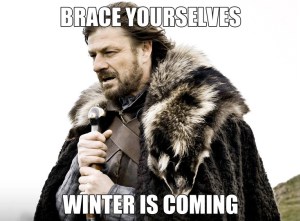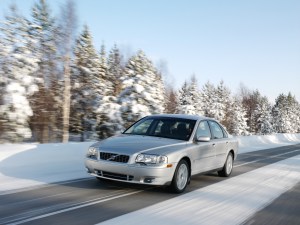Prepare Your Vehicle for Winter
Originally posted Nov. 11, 2016

Wherever you may be, nasty road conditions and winter driving can be dangerous, so it’s always a good idea to plan ahead. Weather.com blogged about how bad-weather car accidents are more deadly in the U.S. than many of the worst storms.
Snow, rain, fog and wet pavement all pose a hazard during the season. To be ahead of the game, here are some preparedness tips:
Garage Time
Battery check – Cold temperatures are a battery killer. Be sure you’ve got the juice to keep going. Check the terminals for corrosion that needs cleaning and ensure the alternator and belts are in good shape.
- Antifreeze and coolant – Look for any radiator and hose leaks and top off the reservoir, if necessary. If it’s been several years since you’ve changed the coolant, be sure to get some fresh fluid in there.
- Windshield wipers and fluids – Make sure the wipers are working and the blades are not worn. Fill the washer reservoir with a good-quality fluid that doesn’t freeze.
- Brake system– Being able to stop is crucial when roads are slick. Look to see that the floor mats aren’t blocking the pedal. If you notice braking issues, have the brake fluid, pads, rotors and lines checked.
- Tire pressure and tread – Tires should be checked monthly for wear and proper inflation regardless of the season. Make sure you have a spare tire, and keep a pressure gauge in the vehicle with you.
- Fuel and oil level – It’s a good idea to keep your fuel tank at least half-full in case you get stranded on the side of the road and need to stay warm. Motor oil should also be topped off.
Emergency Roadside Kit
- Flashlight – I like to carry an LED flashlight in my truck since they last a long time. But a traditional flashlight works well and tends to be brighter.
- Tool kit – It should have the basics, including screwdrivers, pliers, an adjustable wrench and a socket set. Work gloves, tape, fuses and a good pocket knife or multi-tool are all handy to have as well.
- Blanket – Not only does it keep you warm in winter, but it can also block out wind and help treat shock victims.
- Jumper cables – It’s best not to settle for chintzy. Good-quality, thick cables with multi-strand wire, heavy duty clips and extra length can save you from headaches. Invest in four-gauge, 20-foot cables that won’t break the bank and will last a long while.
- Food and water – Keep a stash of high-energy foods such as granola bars and nuts in the car.
- Fire extinguisher – Often overlooked, but good to have. A multipurpose A-B-C type is the way to go.
- First-aid kit – Any kit should contain bandages, gauze and prep pads to stop bleeding and prevent infection.
- Other items to consider – Maps, shovel, broom, ice scraper and flares.
Even if you don’t get any snow, it’s good to be ready for any emergency. Got any more tips to share? Let us know in the comments.


